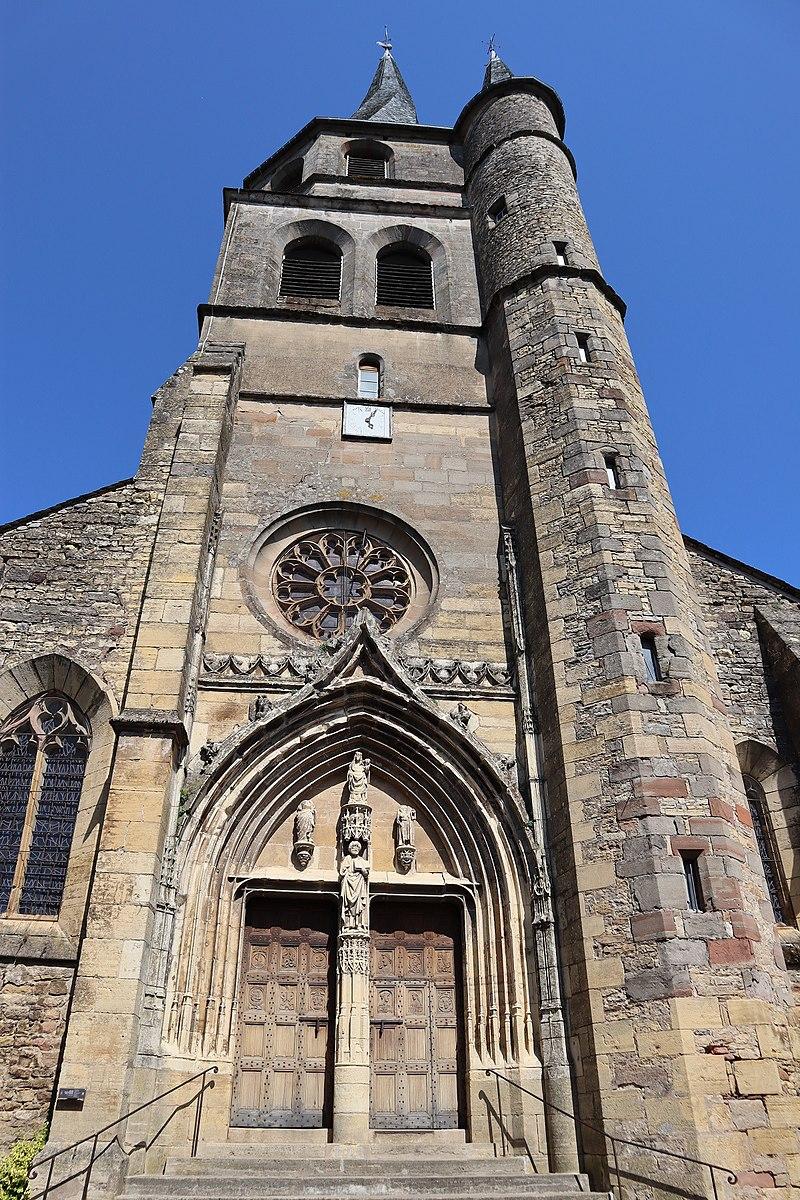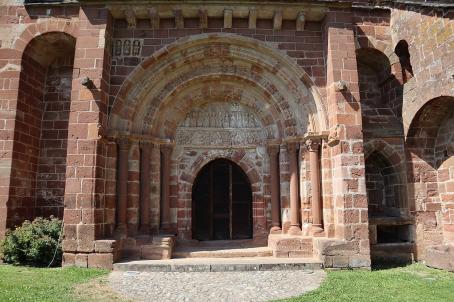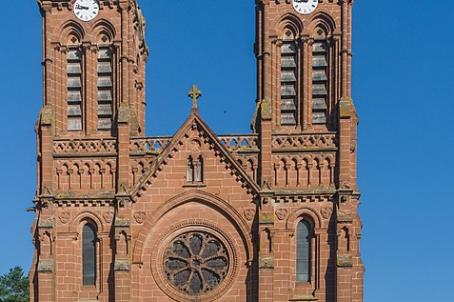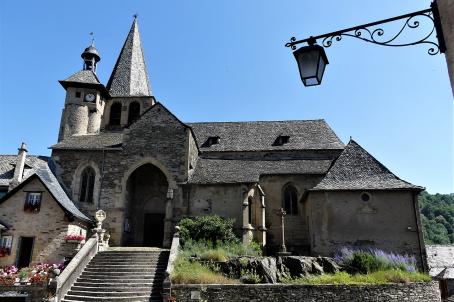Church of Saint Como and Saint Damien, Saint-Come d'Olt
Located at the foot of the Aubrac, in the fertile Lot valley, Saint-Côme-d'Olt is a village whose almost circular physiognomy has kept its medieval character. Its city was fashioned around the ancient ramparts which have become the exterior facades of the houses. Three fortified entrance doors; the Porte de la Barrieyre, Thèron and Porte Neuve allow access to its centre, through very typical alleys. In its centre, it houses the two primordial monuments of the site: its twisted bell-tower church and its castle, former manor of the Sires de Calmont built in the 11th century. This church succeeds a first church, located further away, which has become too demanding. In 1521, the request for construction was authorized by the lord, since the Church becoming too small. Since then, some redevelopment works have taken place.
About this building
The building is in flamboyant Gothic style. It is dominated by a twisted bell tower also called a flamed bell tower 42 meters high. The gate opens to the west. Its eardrum is adorned with three statues. The two oak leaves are separated by a sculpted trumeau showing the statue of Saint Como.






